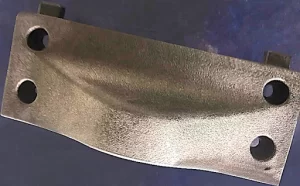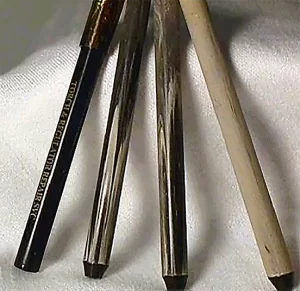
Laser marking and engraving on PPS (polyphenylene sulfide) presents significant difficulties due to its resistance to high temperatures when subjected to laser heat. Recent advancements in colorant technology, including laser-specific carbon blacks and fiber lasers, allow for high-contrast, light-colored, scratch-resistant marking of black glass-filled PPS, with Yellow Card certification. This innovation allows for the marking and micro-marking of data matrices, barcodes, QR codes, and unique part identification across multiple industries, such as automotive, aerospace/NASA MIL electronics, emission control systems, pumps and valves, appliances, tanks, and more. The configuration and optical components of ytterbium fiber lasers require precision to ensure the production of durable, scratch-resistant, high contrast markings.
Optimal laser marking process for PPS. To create scratch-resistant, high-contrast, light-colored markings on black glass-filled PPS, MOPA Ytterbium fiber lasers excel because they can precisely control pulse width and focused power density. This degree of precision allows for enhanced control over the surface chemical foaming process within the near-infrared wavelength range of 1060-1070nm. The optimal pulse duration ranges from 20 to 40 nanoseconds, accompanied by a pulse frequency exceeding 100 kilohertz. A precise laser configuration is essential for controlling the surface temperature, including rise and fall times; failure in achieving this may lead to the marking being easily scratched off.
Achieving high-quality laser marking on glass-filled polymers, such as PPS, necessitates the implementation of robust injection molding techniques and the effective dispersion and distribution of laser-optimized colorants and precompounded materials. The incorporation of glass fibers can negatively affect molding processes, subsequently influencing the quality of laser marking. Surfaces with a high resin content are critical for achieving durable marking. Surfaces with high concentration of glass fiber will produce suboptimal marking results.
The Importance of Laser Marking of Glass-Filled Polymers – The Importance of Injection Molding Operations. To improve the structural performance of standard plastics, the incorporation of glass fibers is used. The materials that are utilized in the production of fiberglass include silica, limestone, and soda ash. “Glass emergence” is a significant surface defect frequently encountered in fiberglass-filled injection molded products. The exposure of glass fibers leads to a surface that is rich in glass fibers. During the process of plastic melt filling and molding, excess glass accumulates on the surface. Following the mechanisms of condensation and molding, white marks are observed on the surface. The surfaces of molded parts must be characterized as “resin-rich” to achieve high-quality marking, as the energy from the laser interacts with the polymer matrix. In contrast, surfaces with a high glass fiber content exhibit poor marking characteristics, and this problem exacerbates as the fiber content increases. Fiberglass exhibits limited absorption characteristics for near-infrared (NIR) laser light.
Decorative and functional markings produced by the laser must be completely readable, such as component identification, schematics, data matrix & barcode. The quality of the marking depends on the polymer, additives and colorants, injection molding processes, and the laser source. Molded polymer surface problems which inhibit readability can affect safety, performance and function of the product.
A laser colorant matrix contains specialized additives, pigments, dyes, selective carbon blacks, titanium dioxide, and anti-scratch agents at low loading content. Precompounded materials, color concentrates, and liquid colors are sold. There is zero impact on polymer properties, and Recertification is not needed due to industry approved chemistries. Yellow card certification. Laser additives, compounds, and colorants are compliant with FDA, UL, NEMA, RoHS.
Polyphenylene Sulfide (PPS) is a high-temperature, semi-crystalline engineering thermoplastic. Within the industry, PPS is known as THE plastic that performs like metal. The properties of PPS, similar to other high-temperature performance plastics including PEEK and LCP, depend on its crystallization behavior. Two distinct forms of PPS are sold: “Branched” molecular structure and “Linear”. Among the most recognizable brands are Celanese Fortron® Solvay Ryton®, SABIC Supec, Toray Torelina, and DIC PPS. The branched version tends to be more rigid. The linear usually offers better mechanical and flexural strength, as well as higher melt stability. Linear PPS also has fewer ionic impurities. Glass-filled fibers (30 percent and 40 percent) and glass fiber/mineral mixtures to standard PPS allow for specialized and demanding applications. Electronics manufacturers commonly select 40 percent glass-filled PPS for insulation and connector products.
What is Polyphenylene Sulfide PPS?
Polyphenylene Sulfide (PPS) is an engineering thermoplastic known for its high-temperature, semi-crystalline properties. In the plastics industry, PPS has become known as the plastic that delivers performance akin to metal. The characteristics of PPS, similar to other high-performance plastics that withstand high temperatures such as PEEK and LCP, are influenced by its crystallization behavior. There are two unique types available: Branched” molecular structure and “Linear”. Some of the most well-known brands include Celanese Fortron® Solvay Ryton®, SABIC Supec, Toray Torelina, and DIC PPS. The branched version tends to be more rigid. The linear usually offers better mechanical and flexural strength, as well as higher melt stability. Linear PPS also has fewer ionic impurities. Glass-filled fibers (30 percent and 40 percent) and glass fiber/mineral mixtures to standard PPS allow for specialized and demanding applications. Electronics manufacturers commonly select 40 percent glass-filled PPS for insulation and connector products.
Is it possible to achieve light-colored laser marking contrast on black PPS? Yes, new advancements in colorant technology, including laser-specific carbon blacks and fiber lasers, allow for high-contrast, light-colored, scratch-resistant marking of black glass-filled PPS, with Yellow Card certification. This advancement allows for the marking of data matrices, barcodes, QR codes, and unique part identification.
What is the best type of laser for marking PPS? MOPA fiber lasers for marking plastics are ideal because they can precisely control pulse width and power density. This precision allows for enhanced control over the surface chemical foaming process. Precise laser configuration is important for controlling the surface temperature.

Yes, fiberglass affects laser marking. Materials used to make fiberglass are silica, limestone and soda ash. Silica is the main material used to form the glass while soda ash and limestone are used to lower the melting temperature. “Glass emergence” is a serious surface defect that commonly affects fiberglass-filled injection molded products. The exposure of glass fibers causes a glass fiber-rich surface. Excess glass forms on the surface during plastic melt filling and molding. After condensation and molding, white marks appear on the surface. Molded part surfaces must be “resin-rich” in order to produce high quality marking, whereby the energy from the laser interacts with the polymer matrix. Conversely, glass fiber-rich surfaces mark poorly, and the issue gets worse with higher fiber content. Fiberglass itself is not a good absorber of near-IR (NIR) laser light.

For high-quality marking, homogenous distribution/dispersion of colorants and additives is just as crucial as resin-rich surfaces. To determine if distribution/dispersion issues are present, it is recommended to setup the laser to mark/scan continuously across the entire part surface. The result shows (left to right) molded pen displaying excellent gold-on-black chroma marking (left), middle two pictures showing poor chroma distribution and far-right showing excellent uniform distribution.

Polyphenylene Sulfide (PPS) is a high-temperature, semi-crystalline engineering thermoplastic. Within the industry, PPS is known as THE plastic that performs like metal. The properties of PPS, similar to other high-temperature performance plastics including PEEK and LCP, depend on its crystallization behavior. Two distinct forms of PPS are sold:
“Branched” molecular structure and “Linear”. Among the most recognizable brands are Celanese Fortron® Solvay Ryton®, SABIC Supec, Toray Torelina, and DIC PPS. The branched version tends to be more rigid. The linear usually offers better mechanical and flexural strength, as well as higher melt stability. Linear PPS also has fewer ionic impurities. Glass-filled fibers (30 percent and 40 percent) and glass fiber/mineral mixtures to standard PPS allow for specialized and demanding applications. To achieve a fully crystalline state, mold temperatures of at least 275 to 300 degrees Fahrenheit are required.
When PPS is molded below 275 degrees Fahrenheit, the moldings are amorphous, or semi crystalline, and remain in this state until they are exposed to higher service temperatures. If the service temperature exceeds the molding temperature, the parts will become more crystalline, resulting in dimensional and property changes.
To achieve a fully crystalline state, mold temperatures of at least 275 to 300 degrees Fahrenheit are required. When PPS is molded below 275 degrees Fahrenheit, the moldings are amorphous, or semi crystalline, and remain in this state until they are exposed to higher service temperatures. If the service temperature exceeds the molding temperature, the parts will become more crystalline, resulting in dimensional and property changes.
